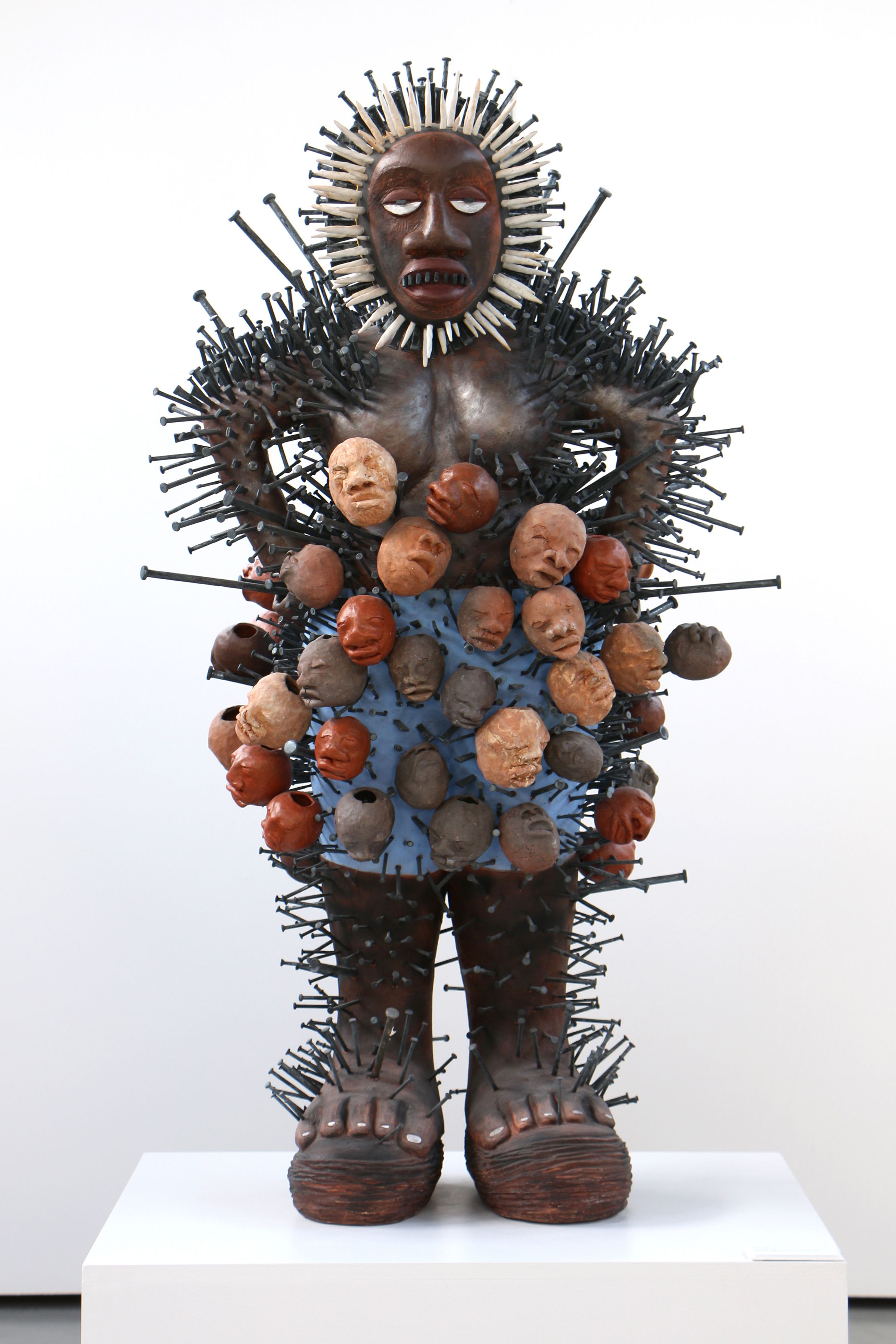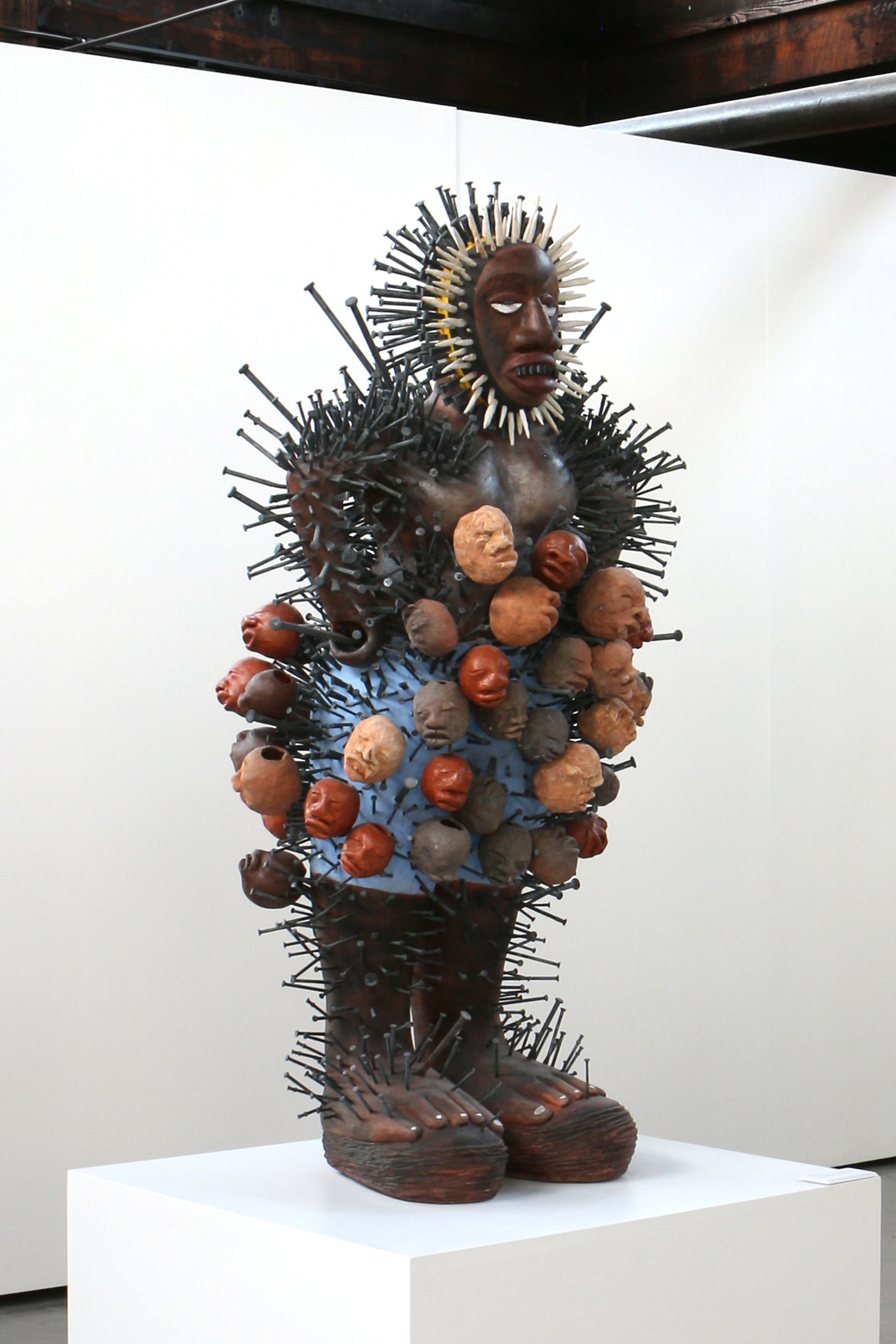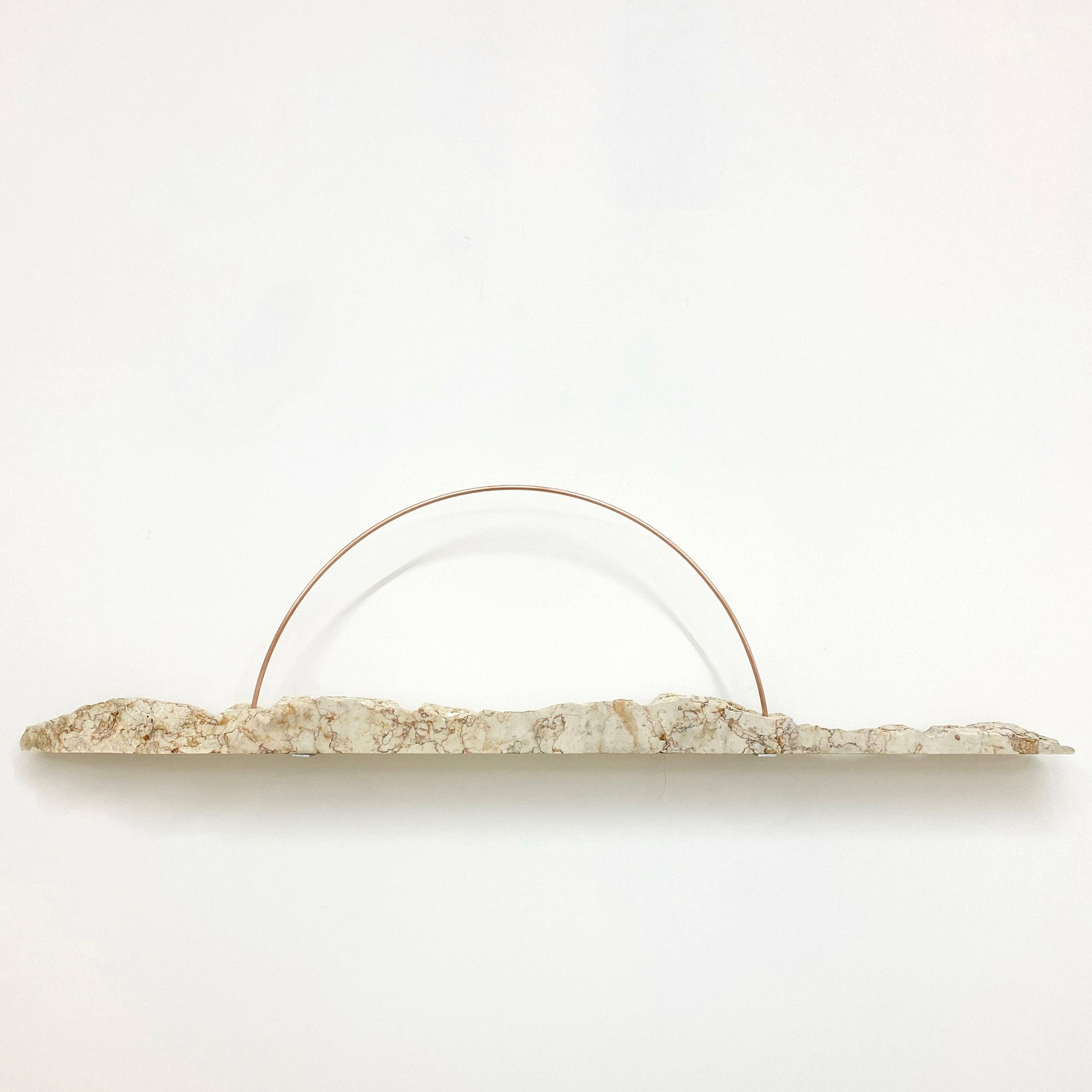
In December 2021, I landed in Miami, changed into a secondhand Trina Turk dress at the hotel where I was staying with another writer, and went to cover Art Basel Miami Beach. Followed by Untitled Art, Scope, and more, that weekend ignited a streak I’m still riding – a dozen and a half art fairs from L.A. to Basel, so far. Across them all I’ve discovered new artists, spotted celebrities, and shared hookah with an entire Sugar Factory staff – though that only happened because, lonely after a vernissage, I asked a member of their group outside a pho restaurant whether it was any good, too sad and tired to choose but aware I needed to eat. They asked me to join.
Even that first trip to Miami ended alone in our hotel room crying to the Elton John biopic and Amazon commercials. My writer friend had gone home early over an uncomfortable experience. Among all the camaraderie of big personalities at fairs, I see flashes of the same in others’ eyes. Standing in bright-lit convention halls amongst crowds all day could do that to anyone. Though exhausting at minimum, continuing global growth in art fairs belies a collective appetite for them.
Stress, chemically known as cortisol, is society’s favorite drug – whether society admits it or not. Stress was invented to make our survival matter to us, long ago in a reality we no longer know. Stress makes us feel important, like we have stuff to do, like it matters if we don’t do it. Like any good drug, stress distracts from the malaise of our own mortality, the wider world’s impending doom. Furthermore, like many drugs, stress also carries a litany of health impacts.


People have historically connected drugs and art making. We still do. It’s not a shameful thing. Chemicals can in fact unlock the gnosis to make art. In equal measures though, drugs can become crutches. In 2018, the year I chose abstinence over alcoholism, Leslie Jamison also published “The Recovering: Intoxication and Its Aftermath,” which debunks mythic associations between addiction and genius. Sobriety has since caught the wind of a wider wellness renaissance taking shape in this new millennium. Some of our moment’s most meteoric artists, like Miles Greenberg, extoll the import of stringent bodily self care to their artmaking practices.
Art is a two-way mirror recording and shaping our values. A healthy society relies on a healthy art world. And vice versa. Art’s history with healing predates our present faith in left-brained logic, but even the Ancient Greeks knew to put frescoes in their hospitals. Marie Watt’s massive, scintillating tapestries honor the Ojibwe jingle dance, meant to help people recover from Influenza in the early 1900s. Individuals make up communities, and communities possess varying levels of health, too. Local governments are learning that robust art scenes can revive languishing communities, from Bushwick to Bethesda to Bentonville, into bustling (if nuanced) metropolises. Money seems to be the most acceptable metric for data that we trust in this era.
Every few years, researchers studying art and wellness join forces to amass meta-studies of their peers’ studies in the field. Last year, Frontiers In Psychology published one such scoping review from 2021. Researchers analyzed studies conducted since 2008 to see precisely which methods researchers have applied to explore art’s ability to enrich the well-being of American communities. They examined 44 studies, accounting for 5,080 participants. 38 of the 44 studies included focused on the impact of active art therapy by polling subjects before and after participatory projects. Only six of the studies examined the impacts of passively seeing art.
We’ve always intuitively known art is an outlet. Now we know it soothes the parasympathetic nervous system. But can viewers achieve that same catharsis from looking at a painting, for example? Color therapy alters mental health materially, but in addition to vivid hues, self-taught artist Tiffanie Delune’s unabashedly emotional abstractions carry experiences from her French Belgo-Congolese upbringing. Which wins out when it comes to her work’s impact? To that end, researchers just recently began to quantify looking at art through neuroaesthetics, a field that’s rising thanks to advancements like the fMRI.

In 2017, The Harvard Crimson covered neuroaesthetics’ aim to understand the brain chemistry behind seeing art. “It’s just one of those questions that science has shied away from, because it didn’t seem answerable or even definable,” said Nancy L. Etcoff, an assistant professor who taught neuroaesthetics at the time. Recording the ephemeral is art’s purview, the way Andrea Galvani translates formulas into objects, or Brie Ruais’s fervent dance with clay captures not just the body and its movement, but its emotion. But now we now know that being ‘moved’ materializes when the Default Mode Network is suppressed enough that disparate portions of the brain communicate. It’s the same reason we trip on psilocybin. Semir Zeki, professor of Neuroaesthetics at University College London, has traced beauty to the medial prefrontal cortex.
That all sounds crazy lucrative, right? I remember crying to those Amazon commercials in Miami and thinking “no wonder these are so effective, who else has more data?” It felt like weaponized art. Imagine an upstart artist getting their hands on all this, like an A.I. algorithm with a soul, and launching the most successful commercial career of all time. Still, Susan Magsamen from the Johns Hopkins University School of Medicine wrote in a 2019 article for Cerebrum that neuroaesthetics faces “the pervasive belief that the arts are either a mere frill compared to the hard sciences or a hobby reserved for leisure,” which “makes research funding a consistent challenge.” Schemers aren’t funding these studies because we all know that the art which truly arrests us does so by commanding a still more ephemeral something than imaging can explain.
Health and wellness are also not the same. Just look at a large proportion of the city of L.A., for example. Although the scientists spearheading longevity research are still seeking an accepted overall measure of health, we can quantify a person’s physical wellbeing. But researchers across those 44 studies assessed in last year’s art and wellness review measured changes in physical, psychological, and social well-being of participants, alongside a fourth measure combining them all, called ‘holistic.’ Other studies eschewed individuals entirely to measure art’s impact on entire communities, instead. Wellness is something more, something interconnected.

Abstinence and sobriety aren’t the same either. Abstinence is like physical health, sobriety is like holistic health – a whole greater than the part. There is no piss on a stick test for alcoholism, unfortunately. The disease, they say in AA, is a spiritual malady. By that measure, a person can also be sober without being abstinent. In fact, demanding abstinence actually devalues collective health, we’ve seen, trapping addicts in shame. What’s the essence of sobriety, then? Well, they’ve invented religions about this. It’s peace, a meta-truth, wider than specifics. I stayed sober because I made art writing my god, so I have a vested interest in where the two connect.
Most people working in media aren’t writing just what they want to write. Outlets need eyeballs to pay shareholders – one way or another. My first writing job was for an agricultural trade publication, where I learned the California Olive Council was at work educating the American public, whose tastes were adapted for rancid over fresh EVOO. Similarly, it’s on the art world to educate consumers for the art world’s own survival. But the art media is stretched so thin right now that writers alone can’t convince the public to start reading reviews over sensational news stories with big names and numbers in their titles. If your favorite magazine followed some of the advice you’re giving them, they’d go under. Quickly. Galleries and institutions are part of that, too.

Play is an antidote we can all work with, across the art world’s infamous hierarchies. The same way society glamorizes stress, we could come to glamorize what’s really fun. Play is a stress reliever, a great unifier that could perhaps quell the proverbial collective Default Mode Network so disparate groups can communicate. Art fairs can foster play by prioritizing discovery amongst the selling which keeps them afloat. Experts have said that even a card game played for money still counts as play depending only on any player’s state of mind. I know that external constraints make gallerists, artists, and writers stressed at fairs. Even collectors, who it’s all for, are stressed too – that’s how galleries usually get them to buy. But if we want a world where the arts don’t need to quantify themselves to stay afloat, art is part of the equation, helping to build that world.
Untitled Art was a bright spot for me that first fair weekend. I learned about some of the artists I’ve mentioned here on that first visit. I met gallerists I greet at each event like the first day of school. From intentional curation to its manageable floor plan, special projects worth exploring, and a serene spot right on the shores of South Beach, Untitled offers the excitement that draws so many to art – as a sheen atop the forces beneath which make art worth it, and viable. I hope more fairs run with this wave, and embrace art’s age-old responsibility on behalf of our moment.